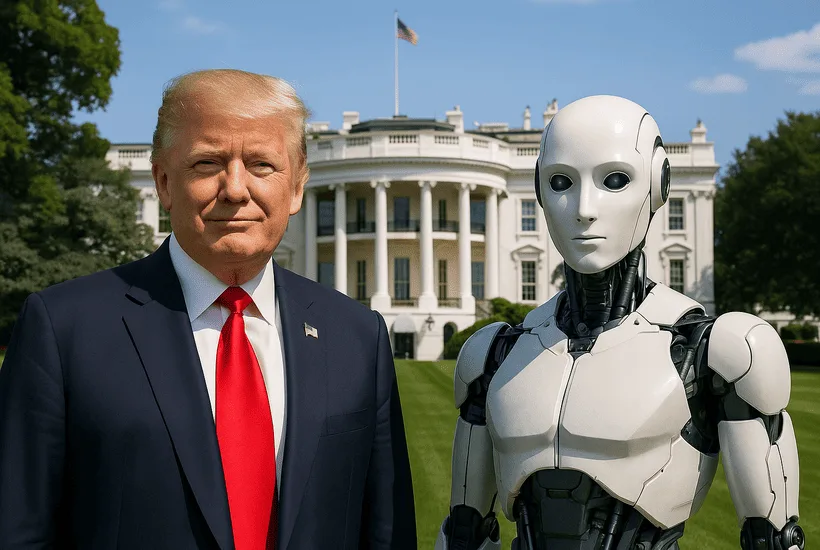- President Trump wishes to make the U.S. the AI capital of the world
- The AI Action Plan has proposed a cut in red tape to make AI exploration less burdensome by the U.S. states
- It has also noted the need for the U.S. to upgrade its electrical grid to match the pace of AI innovation
U.S. President Donald Trump’s administration, that has rapidly been outlining crypto regulations, is parallelly working to make the country lucrative for Artificial Intelligence (AI) developments as well. On Wednesday, July 23, the Trump government published its AI Action Plan – that aims to streamline regulations for data centres and simplify government procurement processes for select AI companies among other focus points.
The 28-page action plan laid out by the White House stresses on three key pillars – accelerating AI innovation, building native AI infrastructure, and leading the international efforts in AI diplomacy and security.
“This Action Plan sets forth clear policy goals for near-term execution by the Federal
government. The Action Plan’s objective is to articulate policy recommendations that this administration can deliver. The AI race is America’s to win, and this Action Plan is our roadmap to victory,” the White House said in its statement.
Newsletter
Get weekly updates on the newest crypto stories, case studies and tips right in your mailbox.
The creation of regulatory sandboxes or AI centres of excellence to allow quick testing of AI tools under the government’s supervision is among key recommendations in the action plan. The document highlights that reducing bureaucratic red tape and onerous regulations is crucial at this early stage of the technology’s development to not make it burdensome for states to experiment with.
The action plan has further invited the National Institute of Standards and Technology (NIST) to design the national AI standards and also study the impacts that the technology could have on industries like healthcare and energy among others.
Additionally, the guidelines highlight how the U.S. could rightly invest in AI interpretability, improve the national electric grid to match the pace of AI innovation, and start upskilling future workforces in AI to establish the U.S. as the AI capital of the world.
“Today, a new frontier of scientific discovery lies before us, defined by transformative technologies such as artificial intelligence. As our global competitors race to exploit these technologies, it is a national security imperative for the United States to achieve and maintain unquestioned and unchallenged global technological dominance,” President Trump was quoted as saying commenting on the action plan.
From the looks of it, the U.S. is inclining towards giving AI companies more free hand to develop and experiment with the technology. This direction seems to be different from what the European Union (EU) regulators are batting for.
On July 10, the EU had published its code of practice for general-purpose AI (GPAI) – that mandates AI firms to not use others’ intellectual properties including articles, books, and news stories to train their models. The rules also direct AI firms to maintain frequently updated documentation on their operations and impacts among other stipulations. Meta has refused to adhere to these guidelines, Around 40 other firms have written to the EU regulations, seeking an extension of the August 2 deadline for these guidelines to go live in the region.













